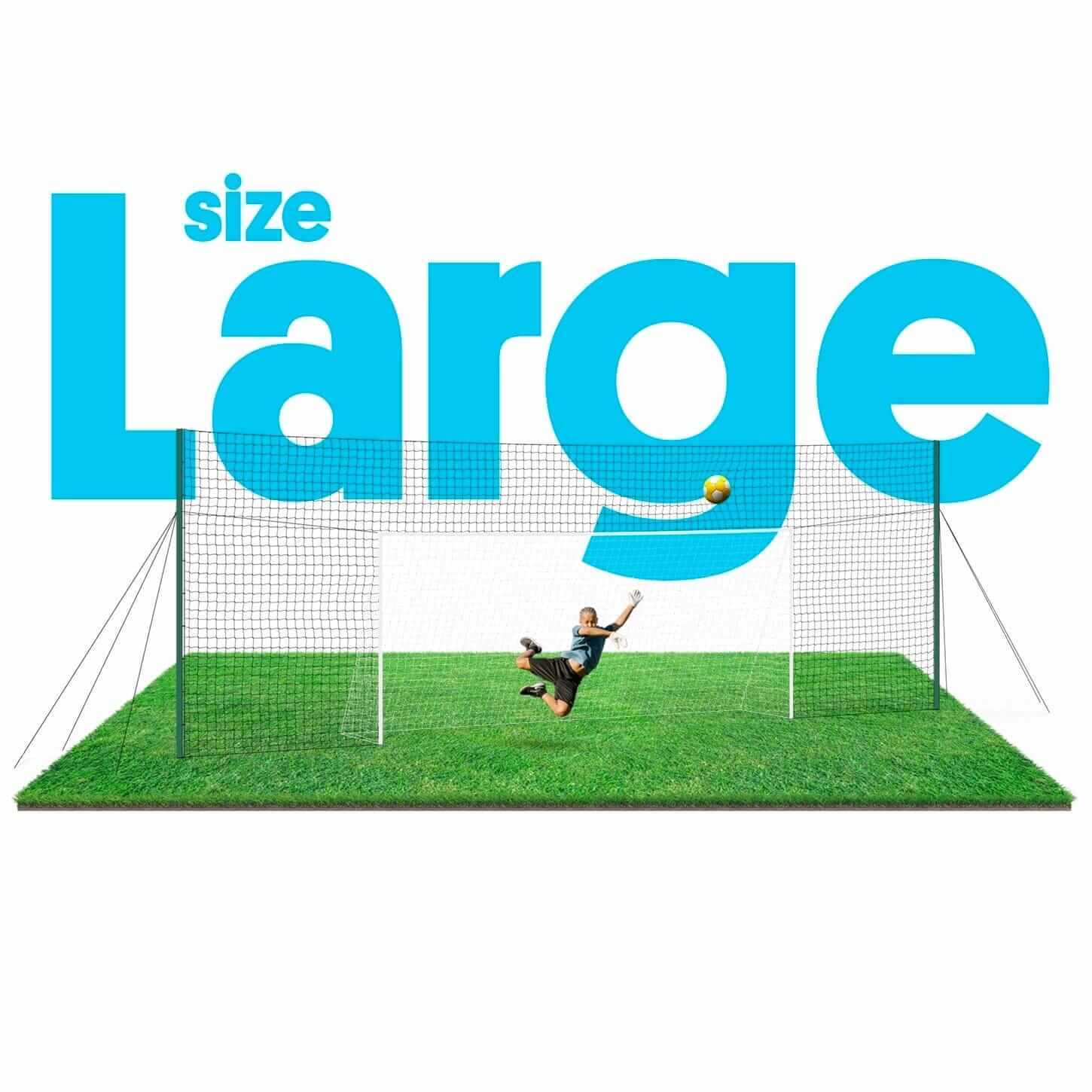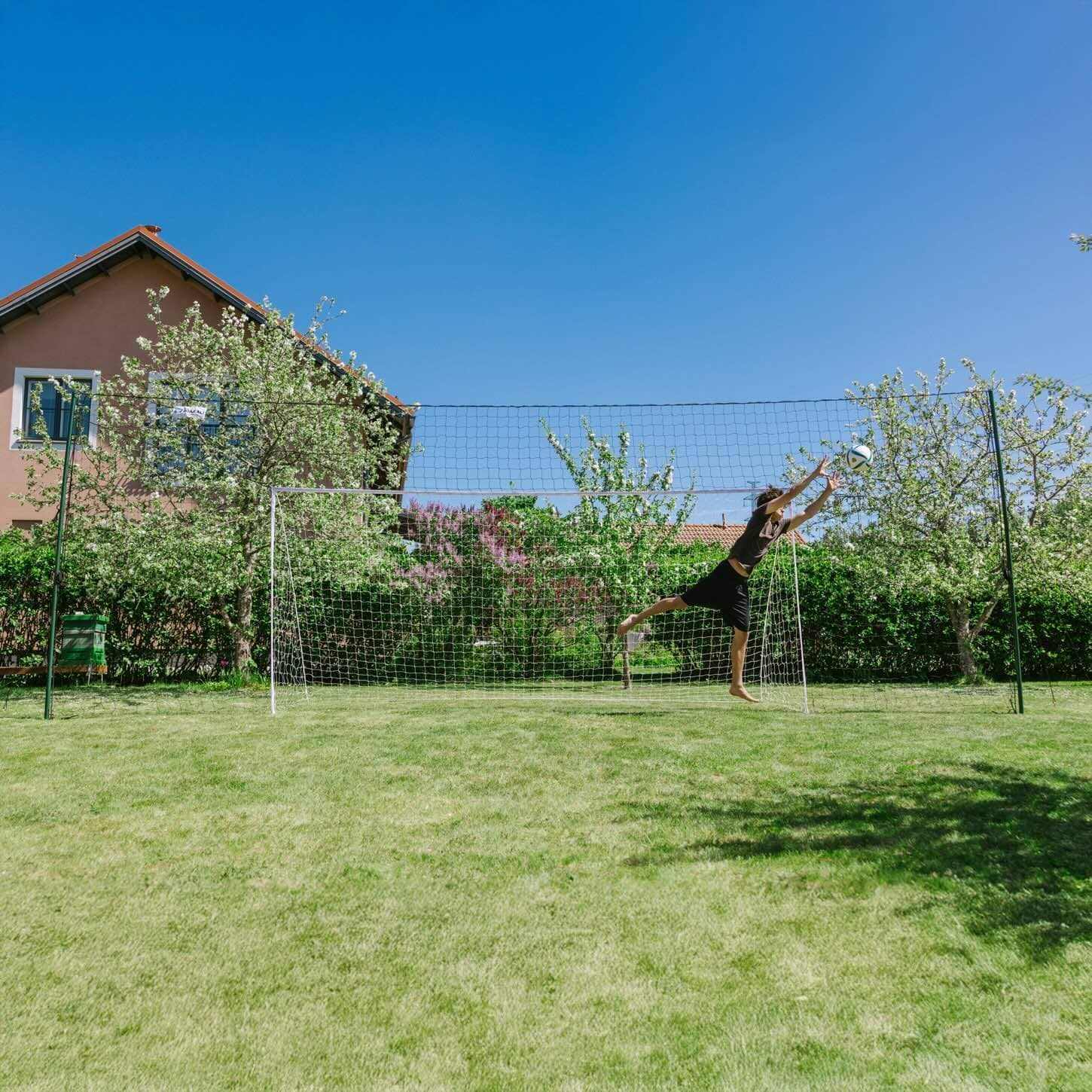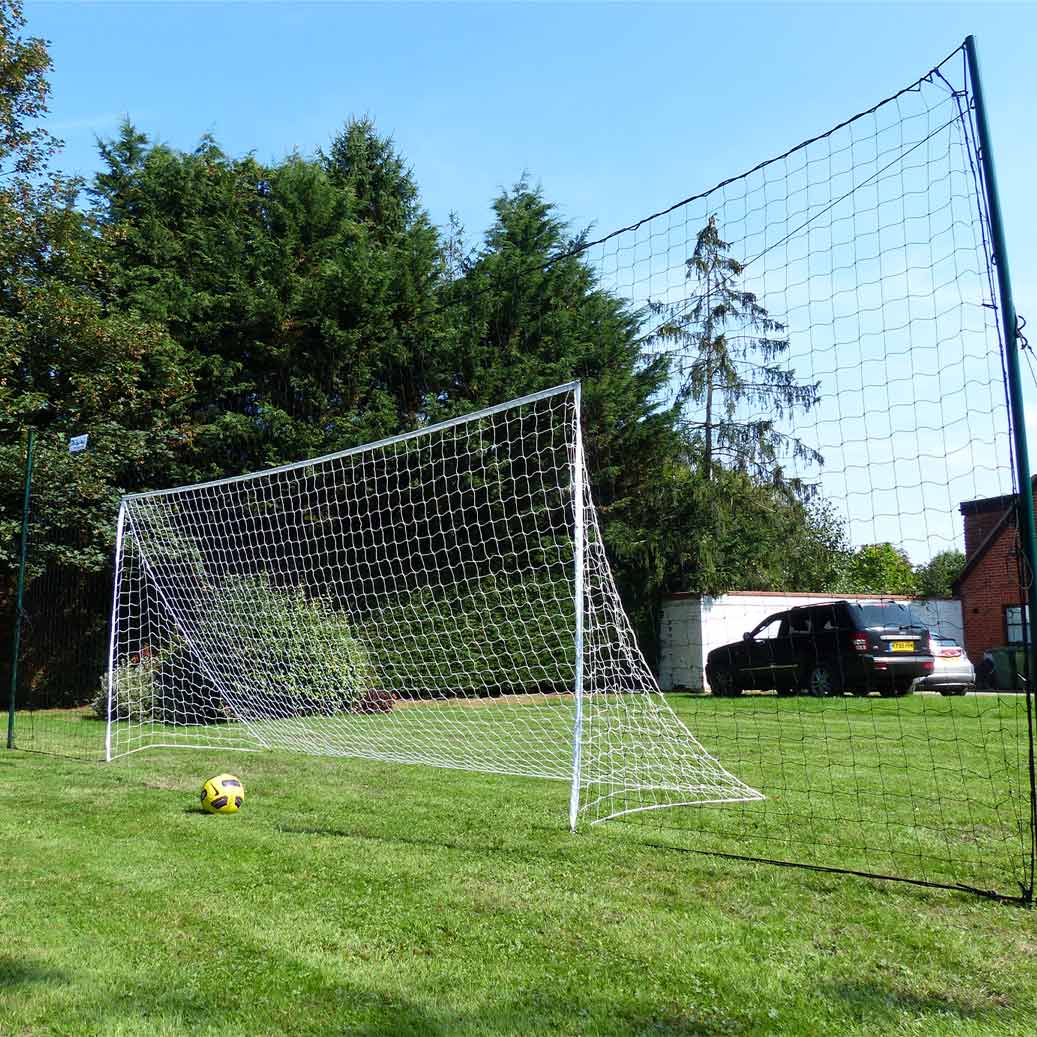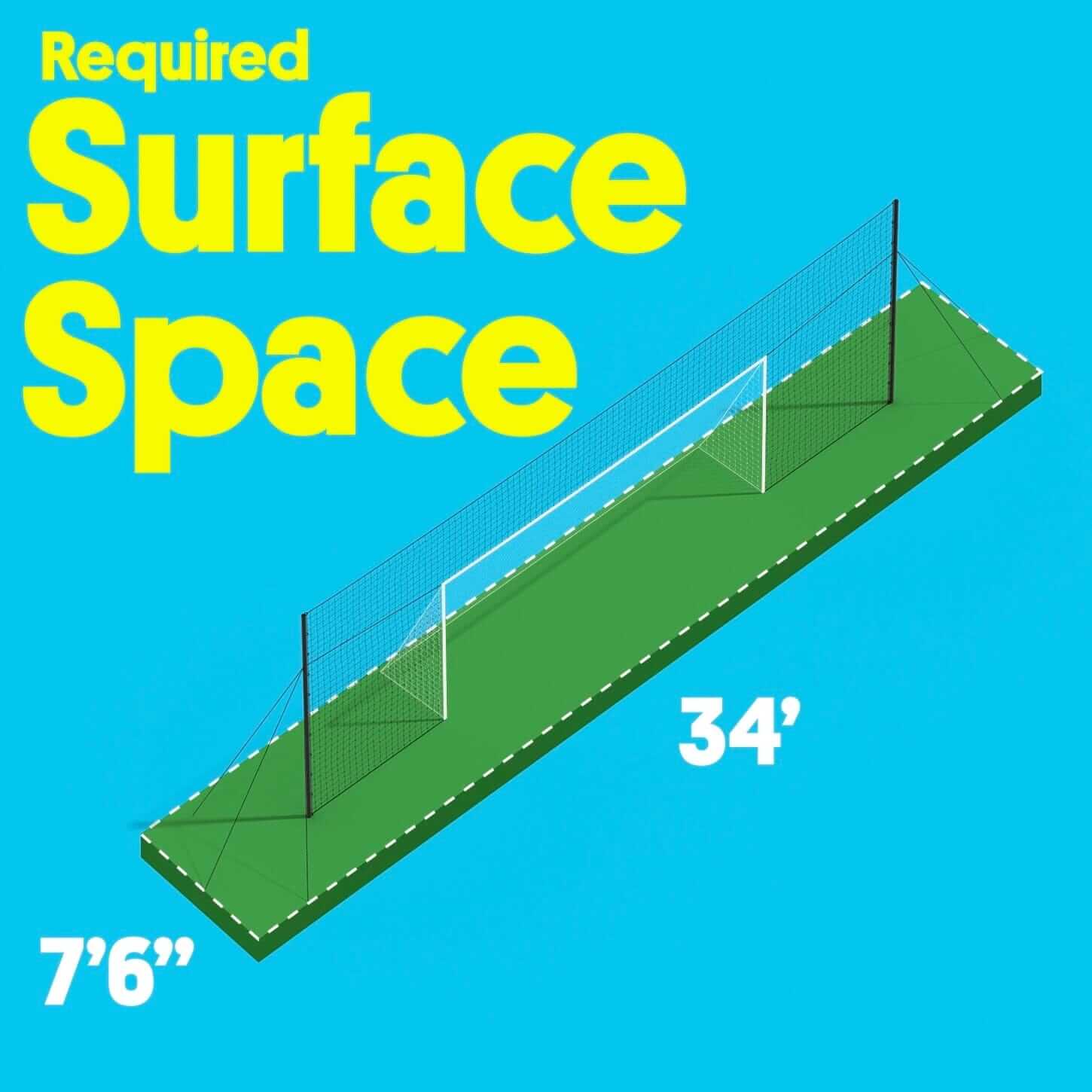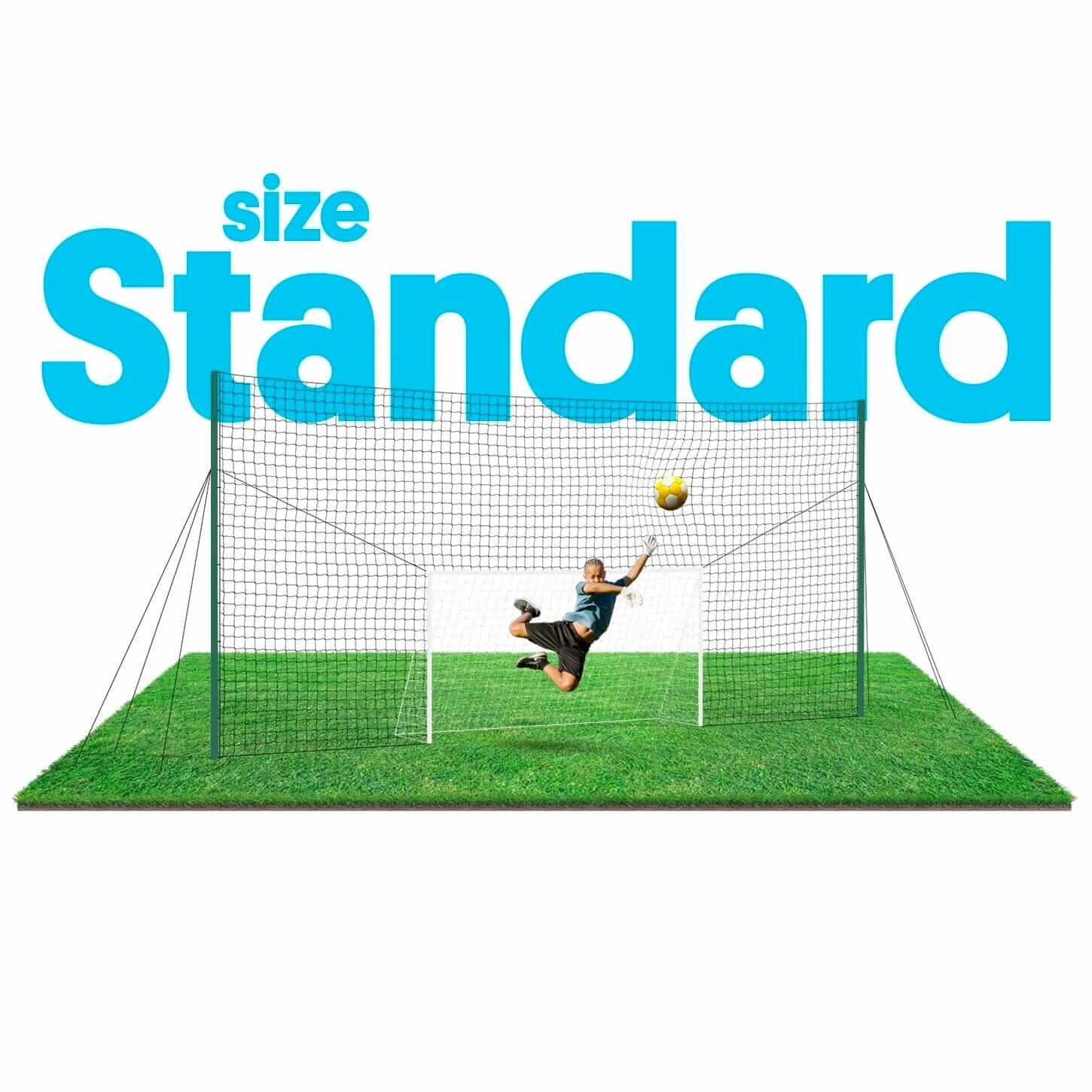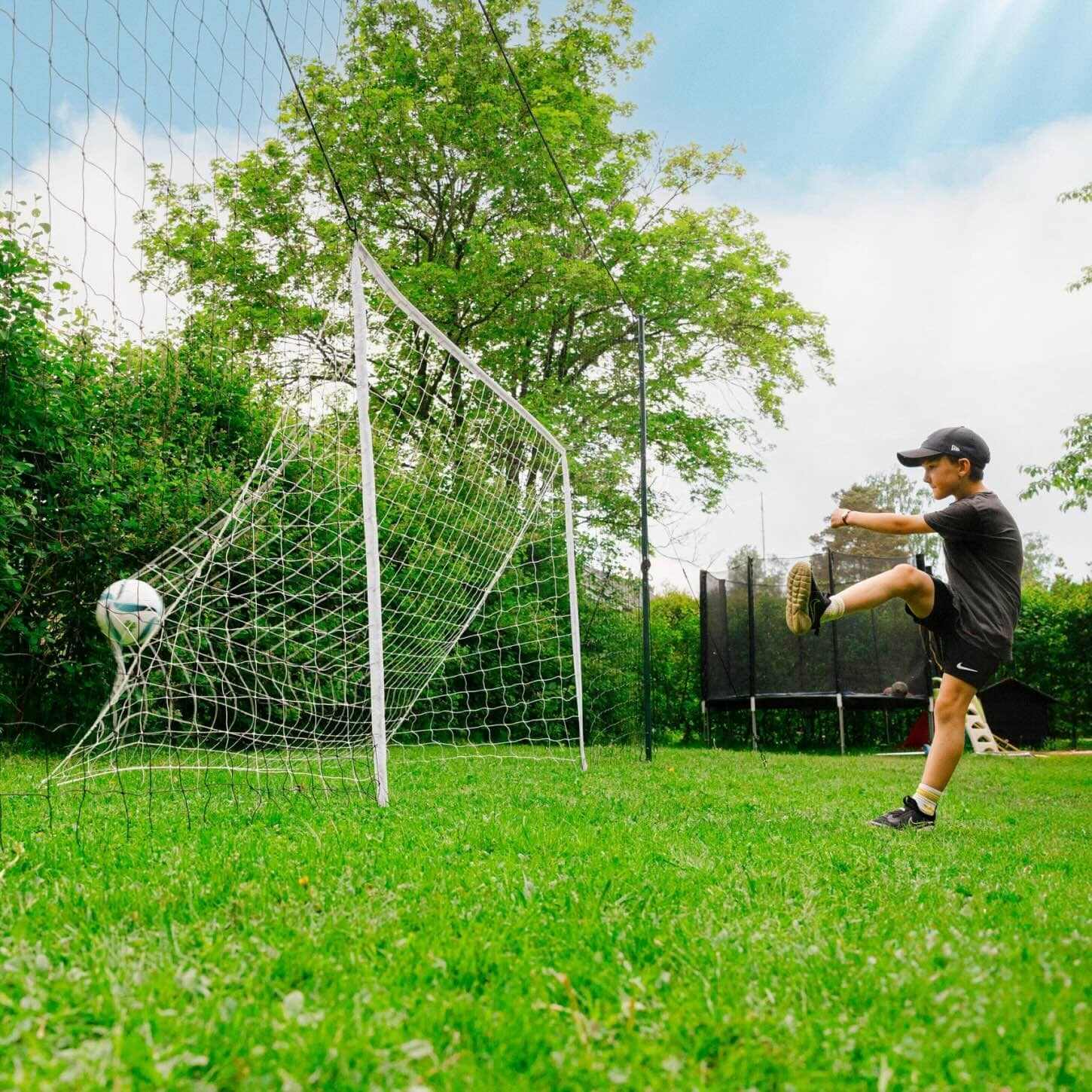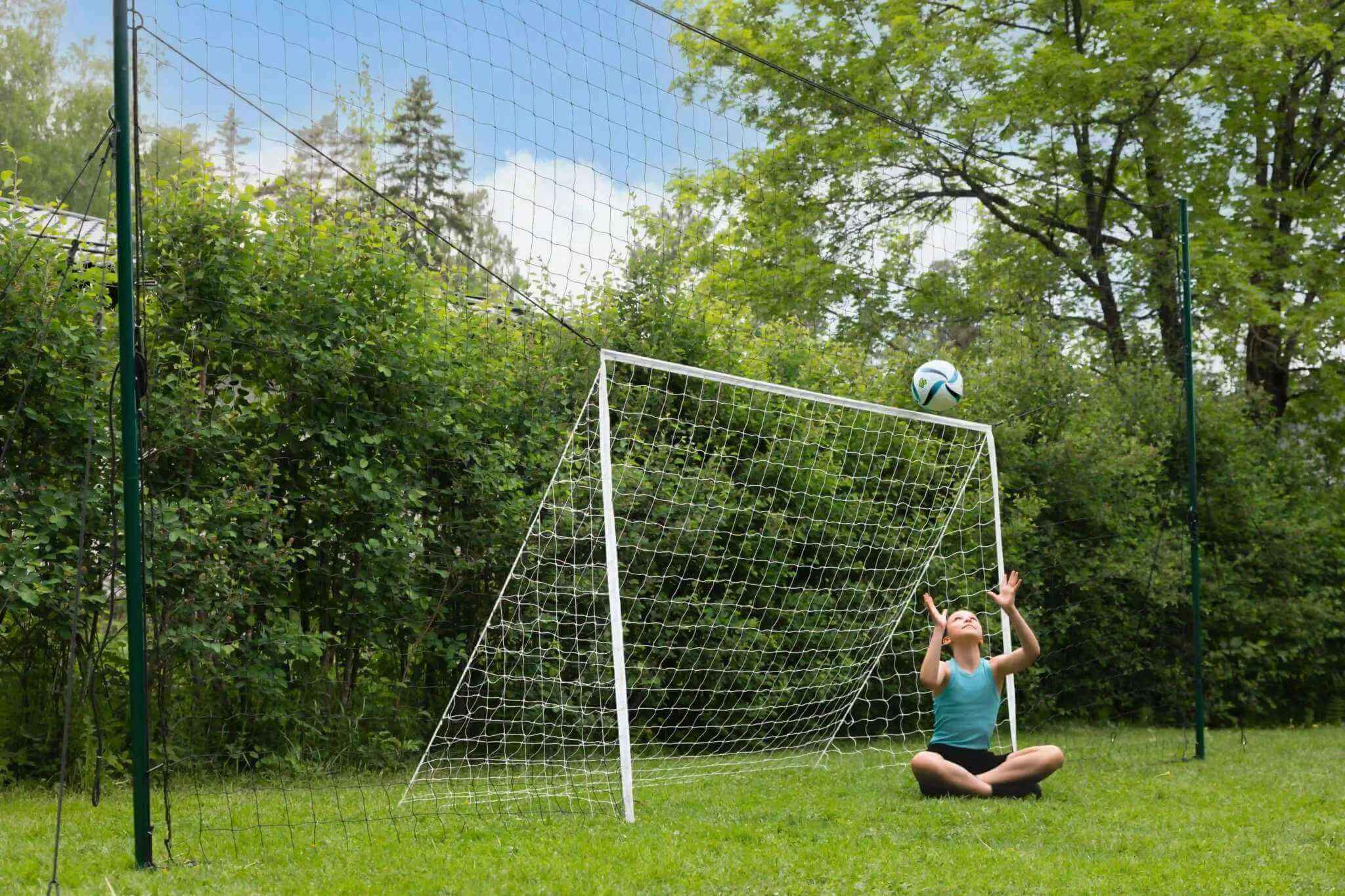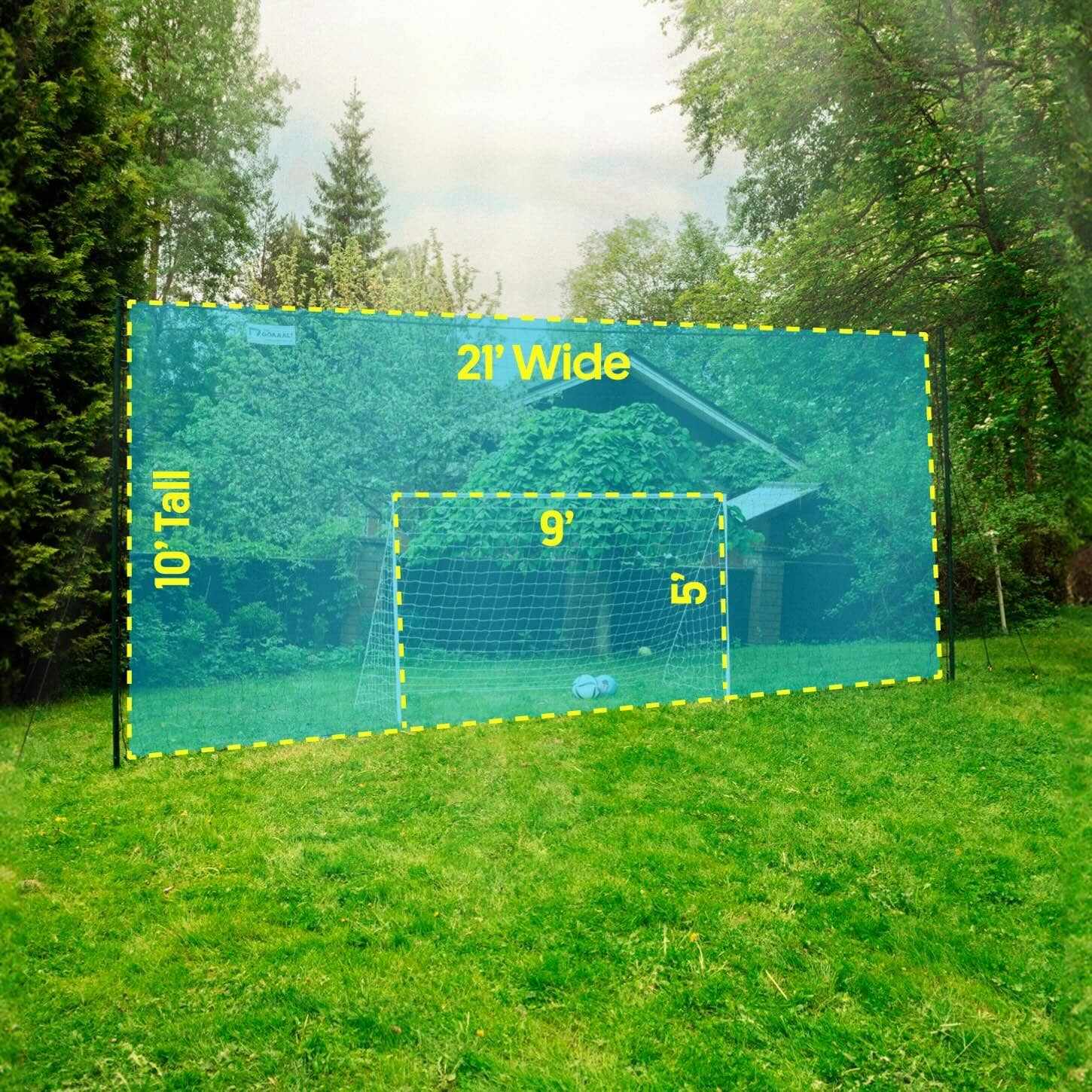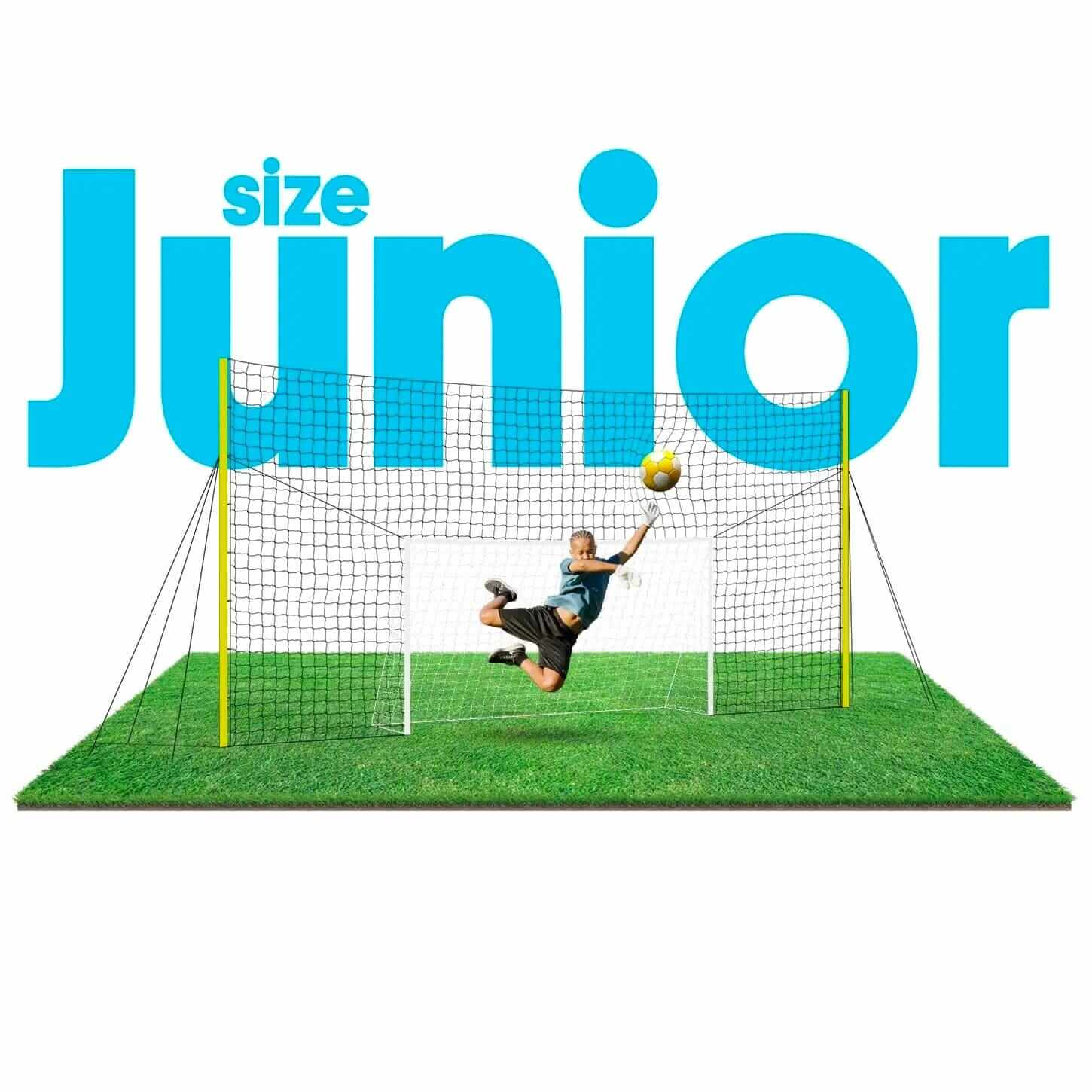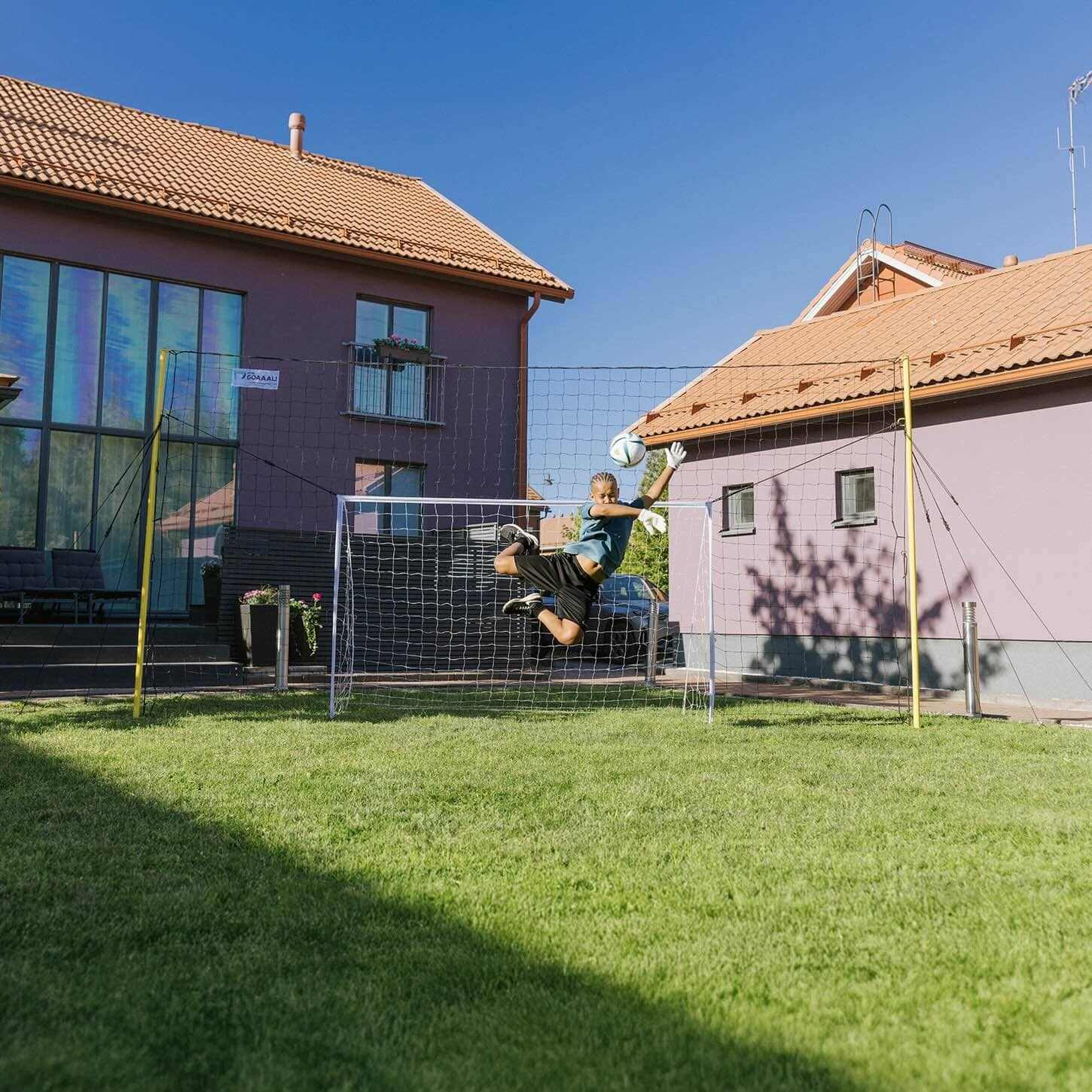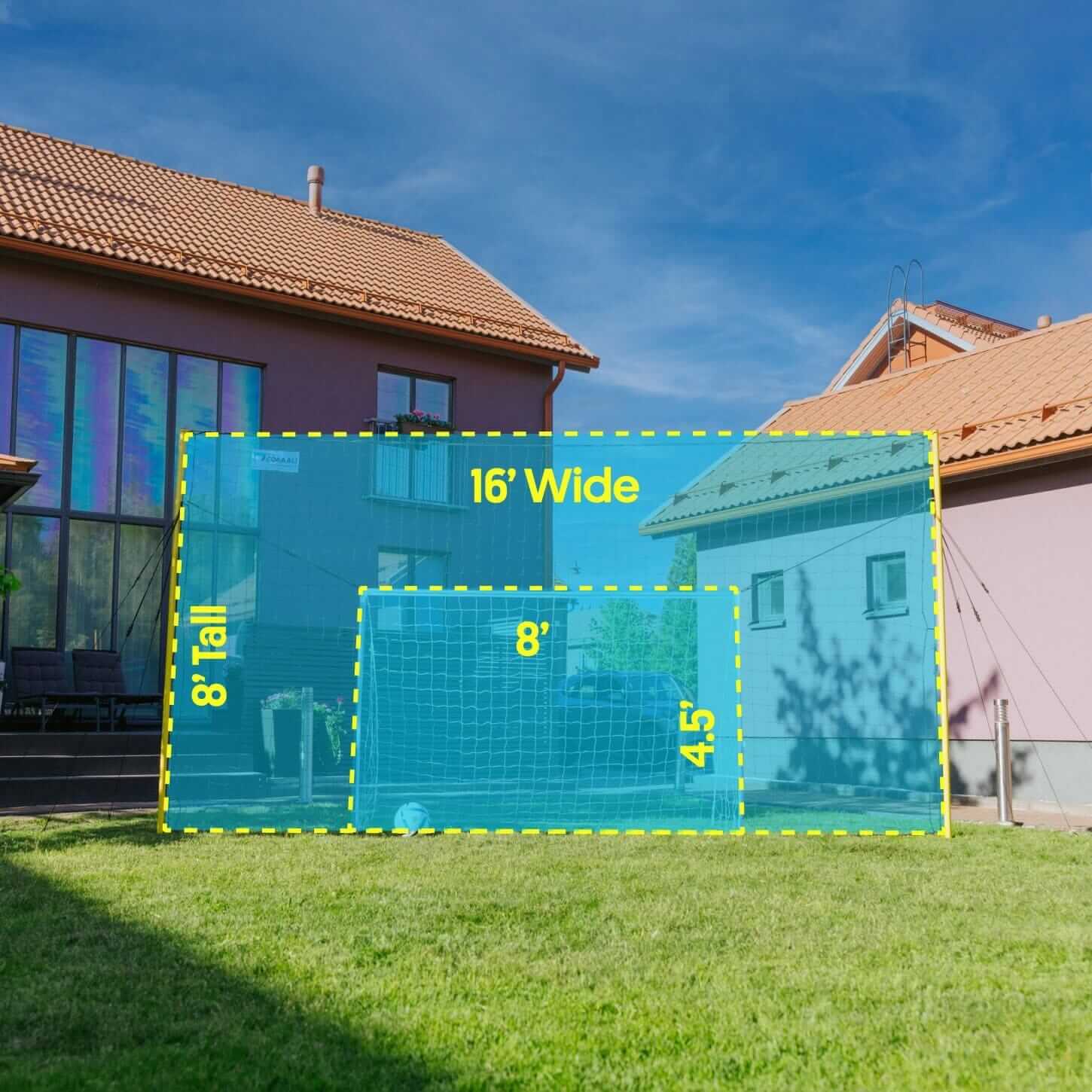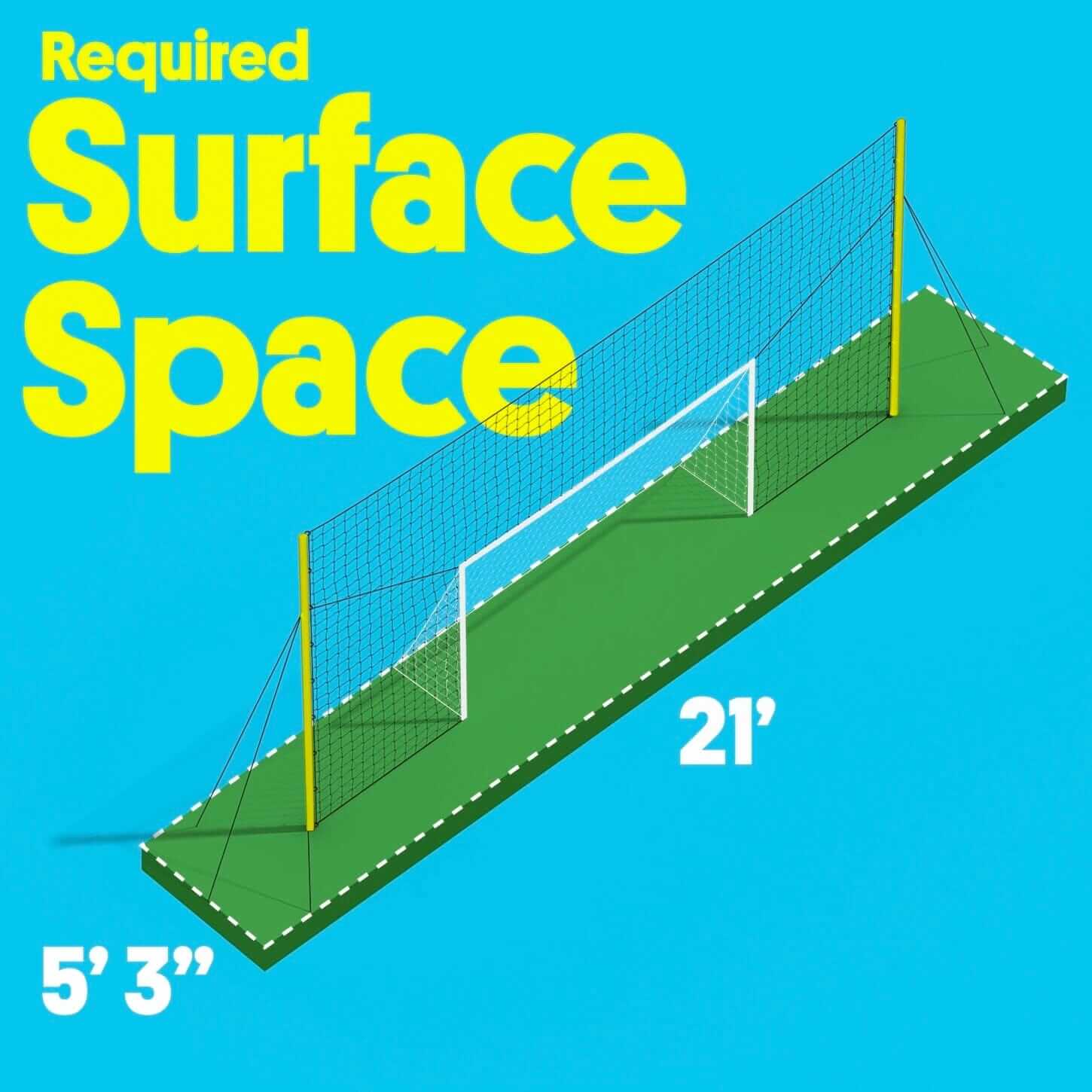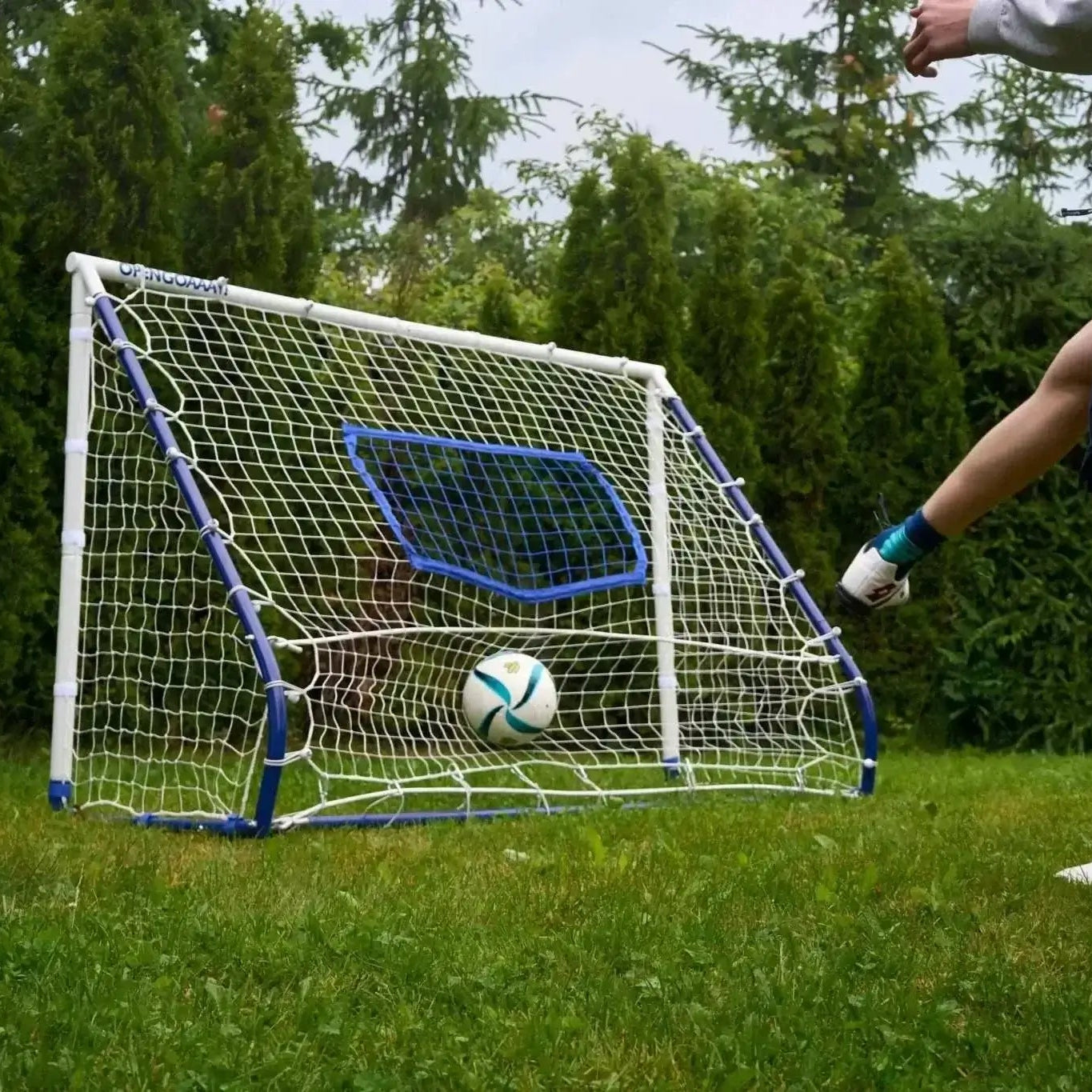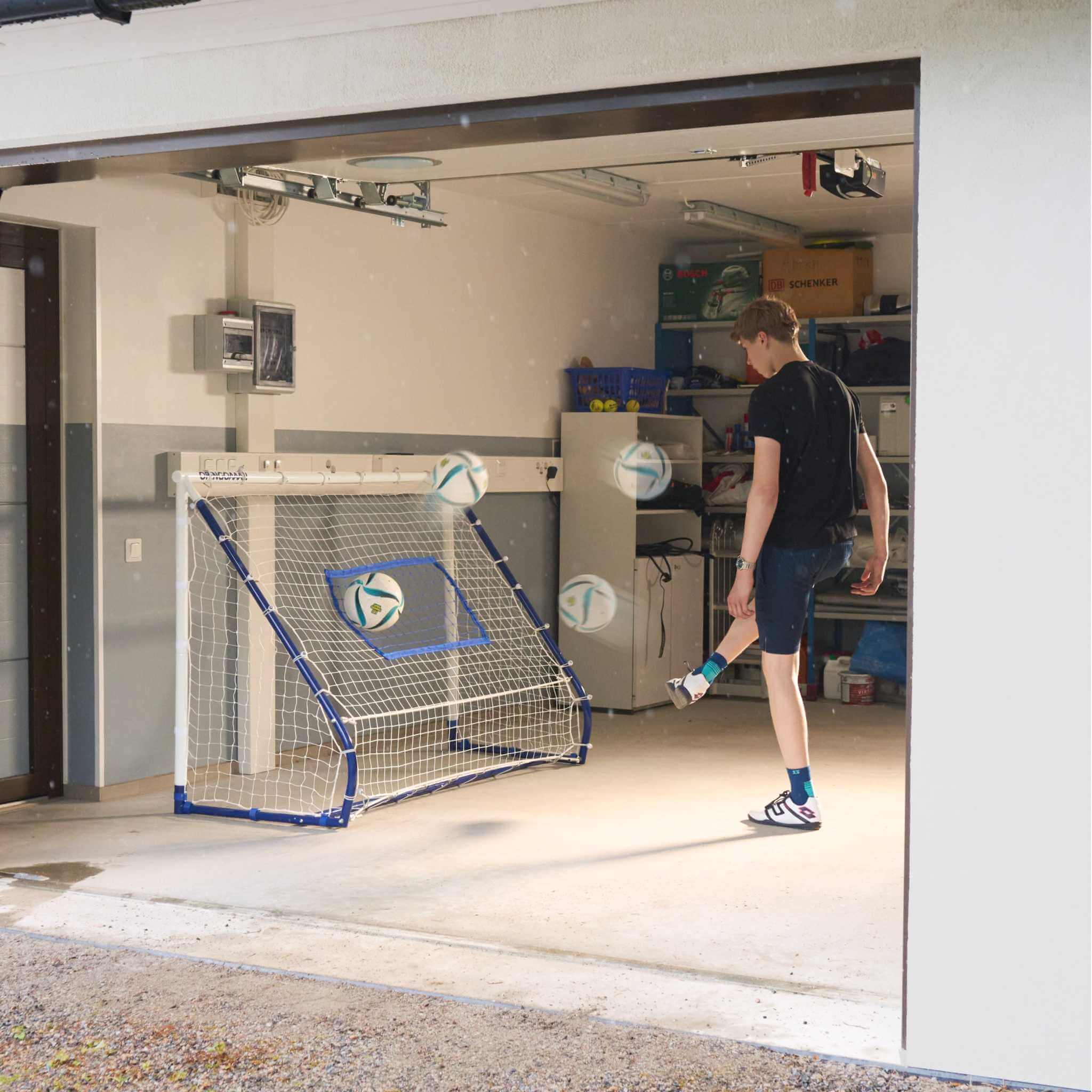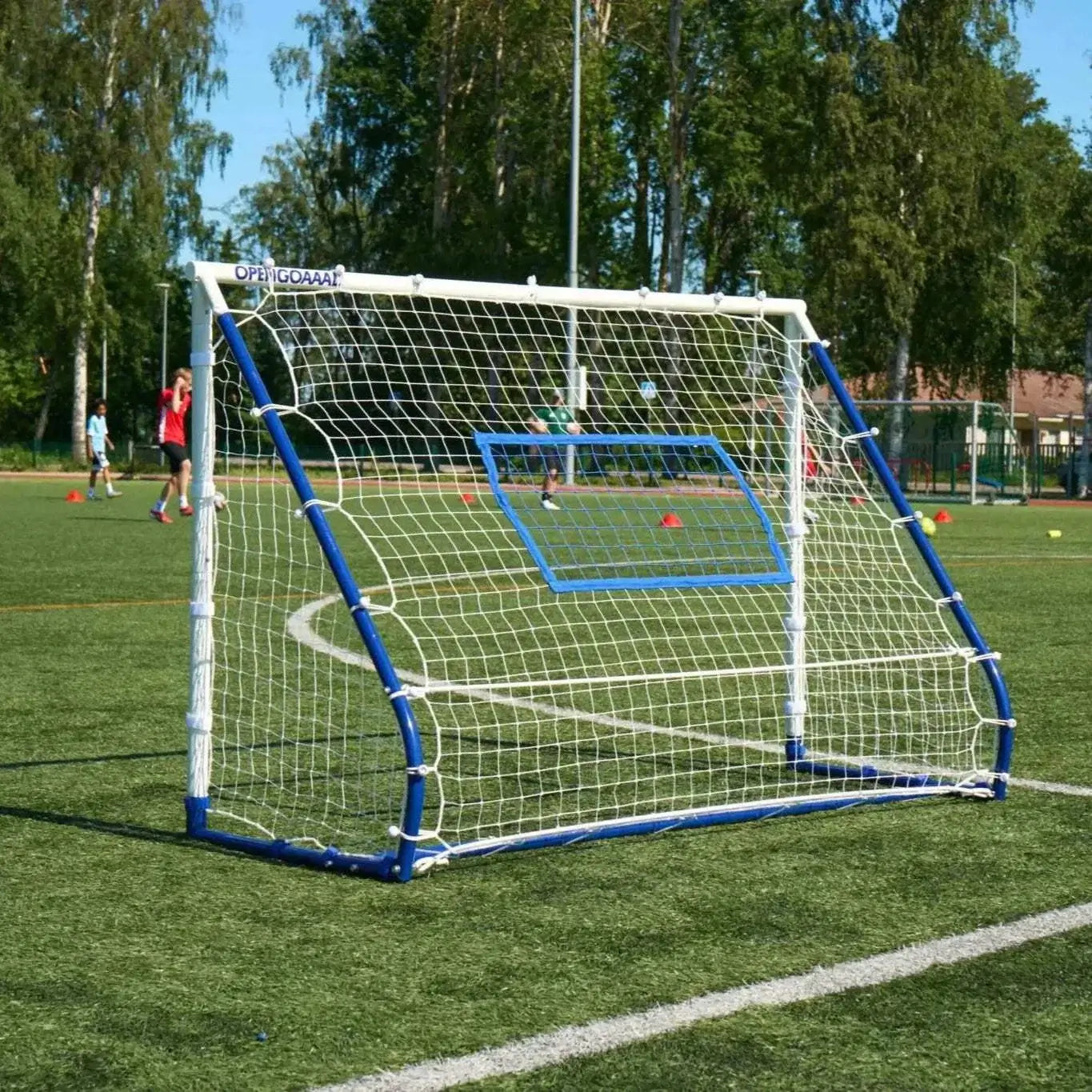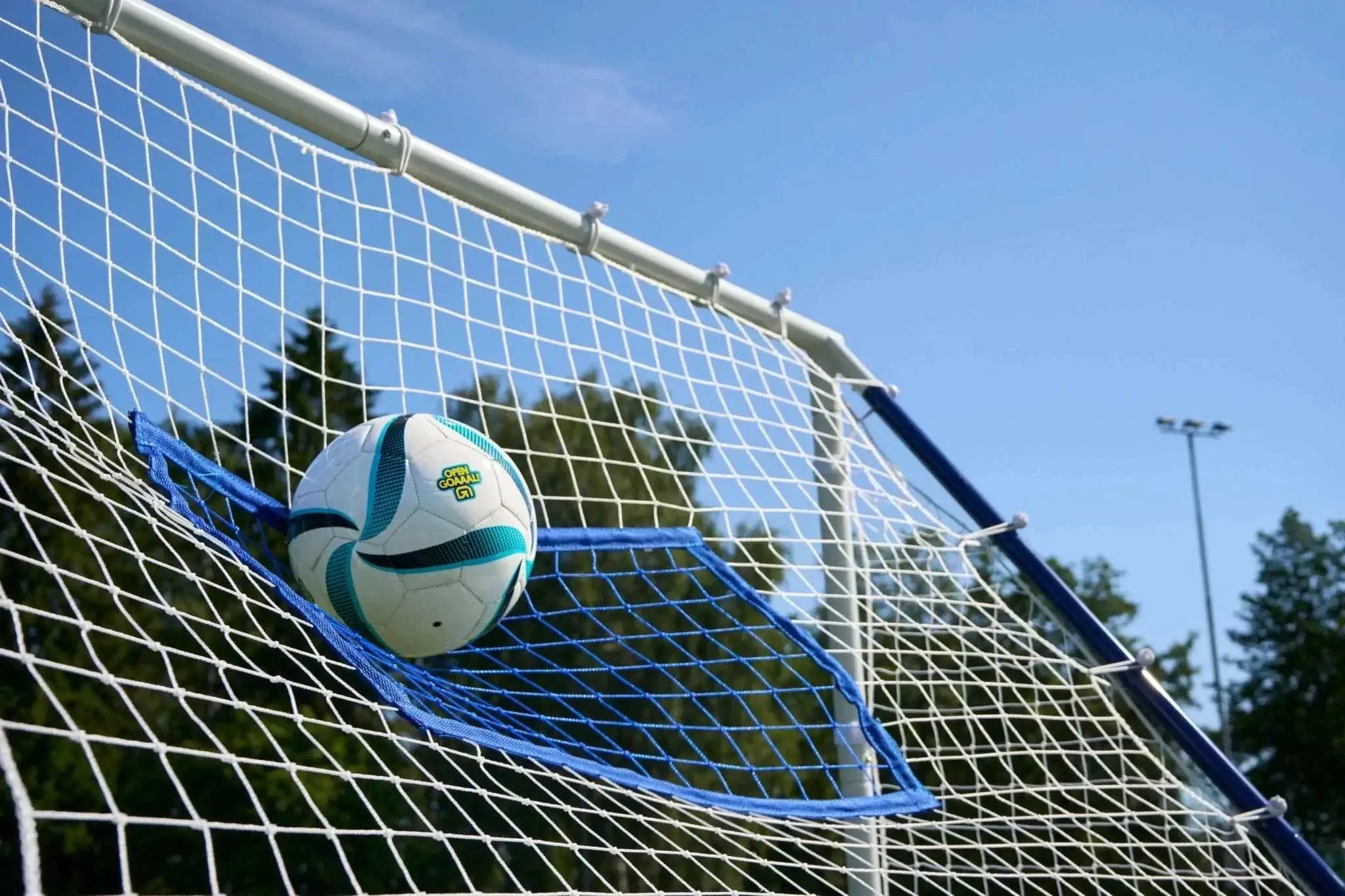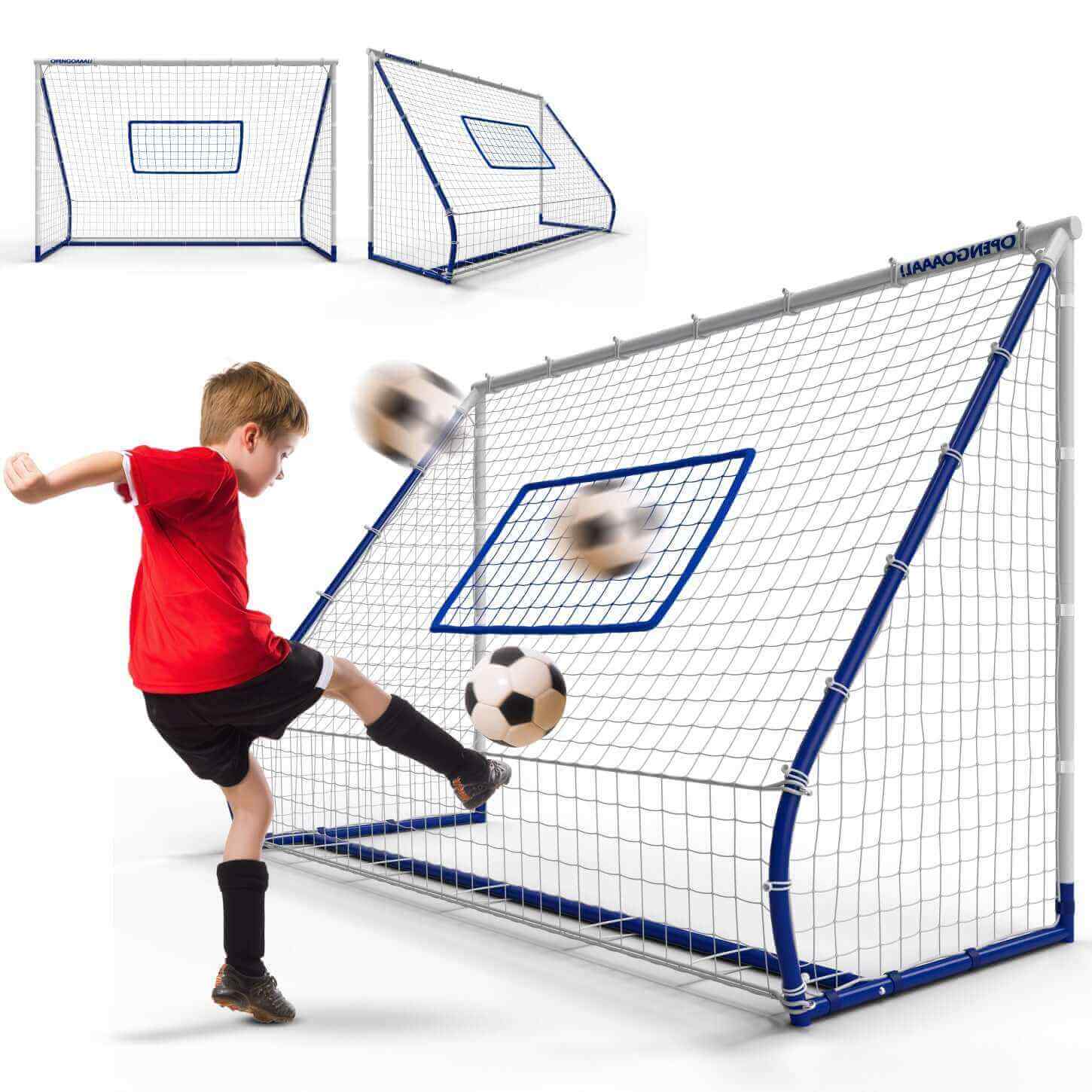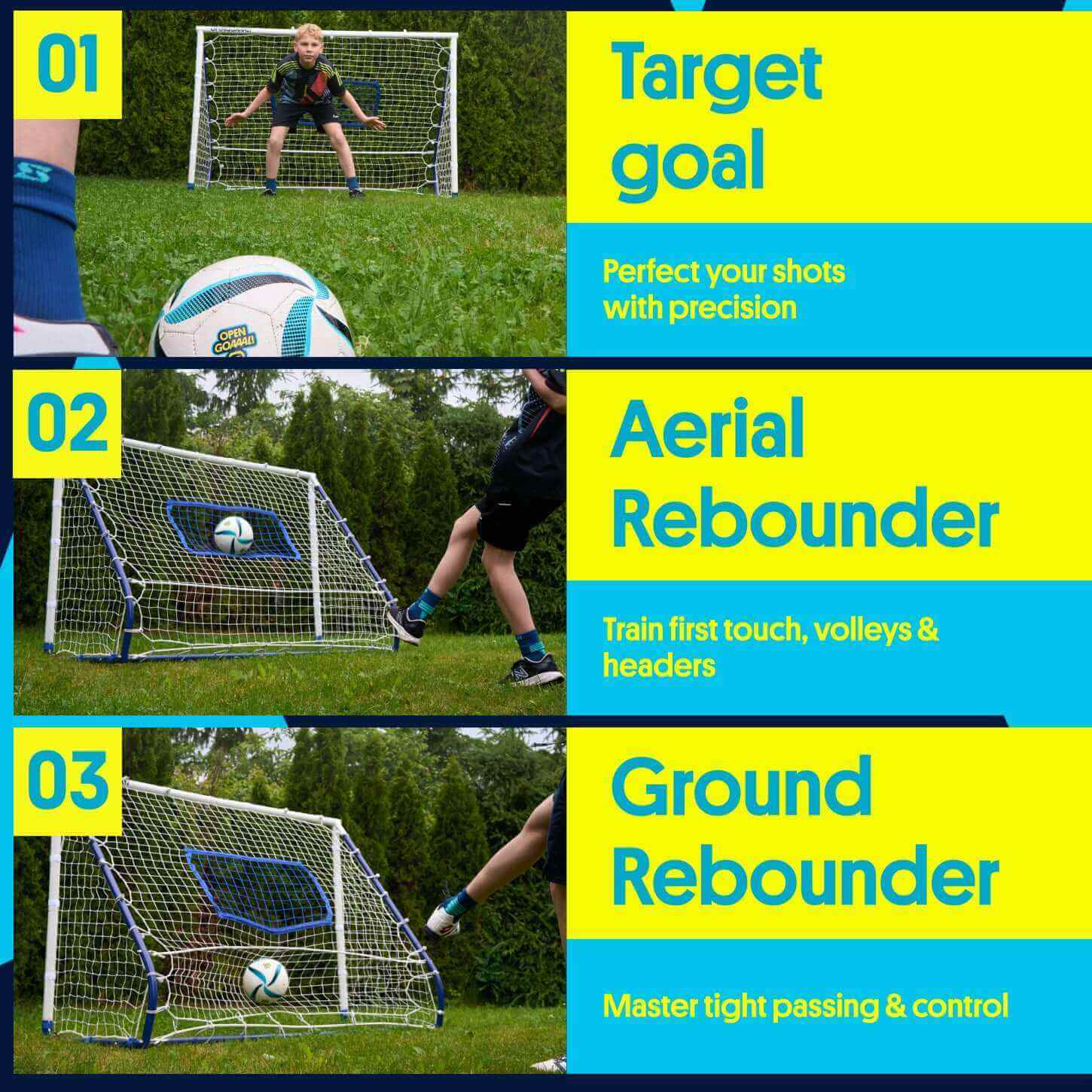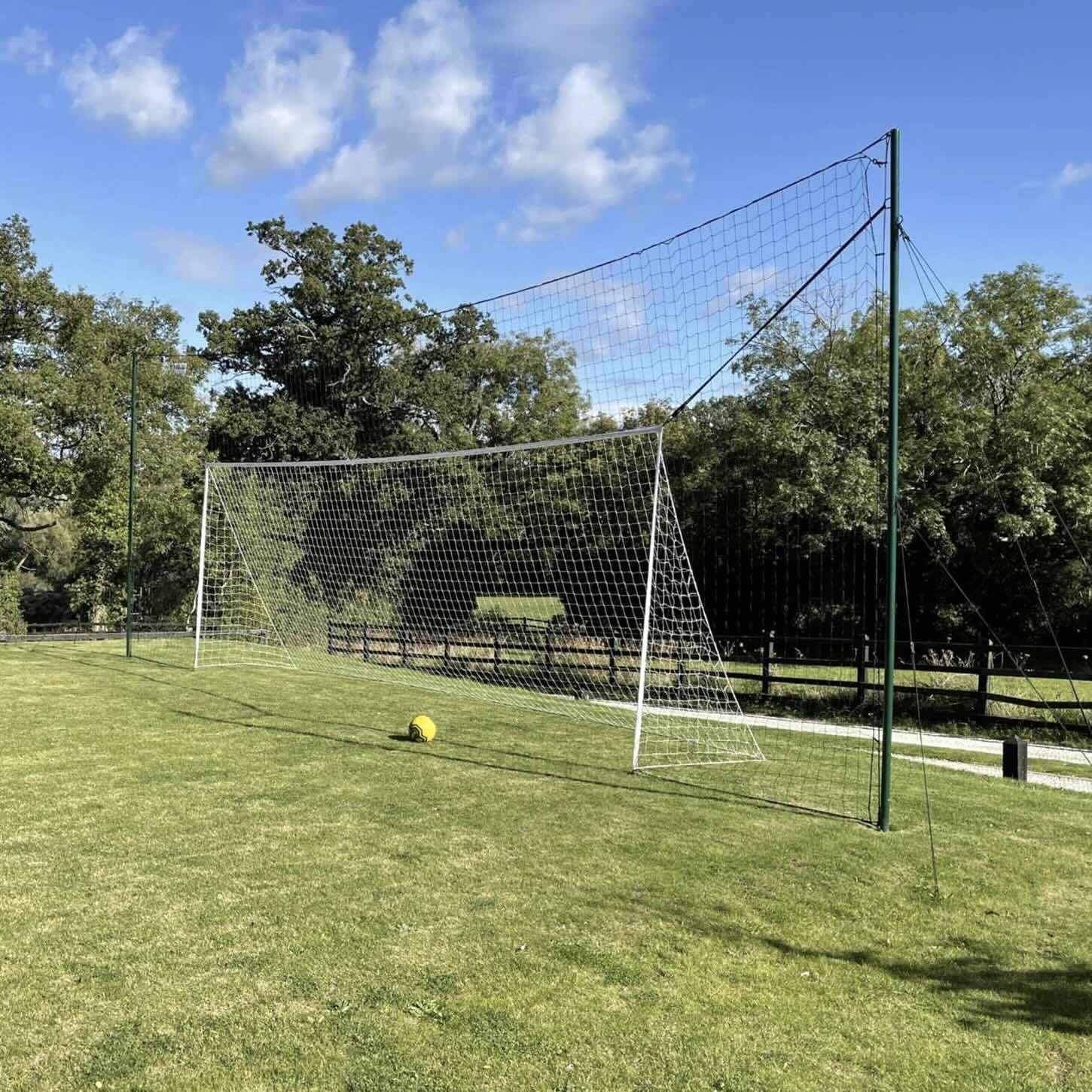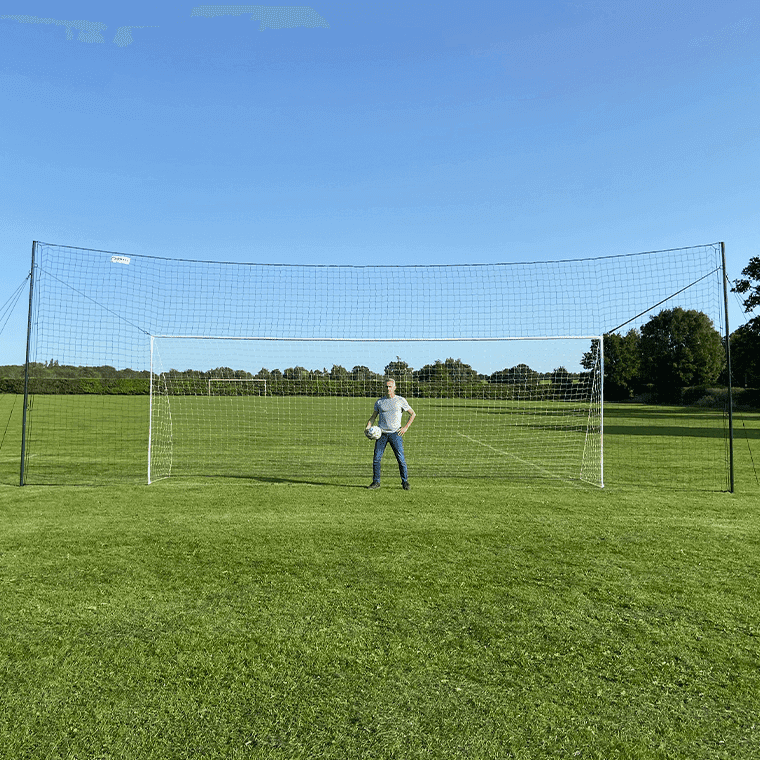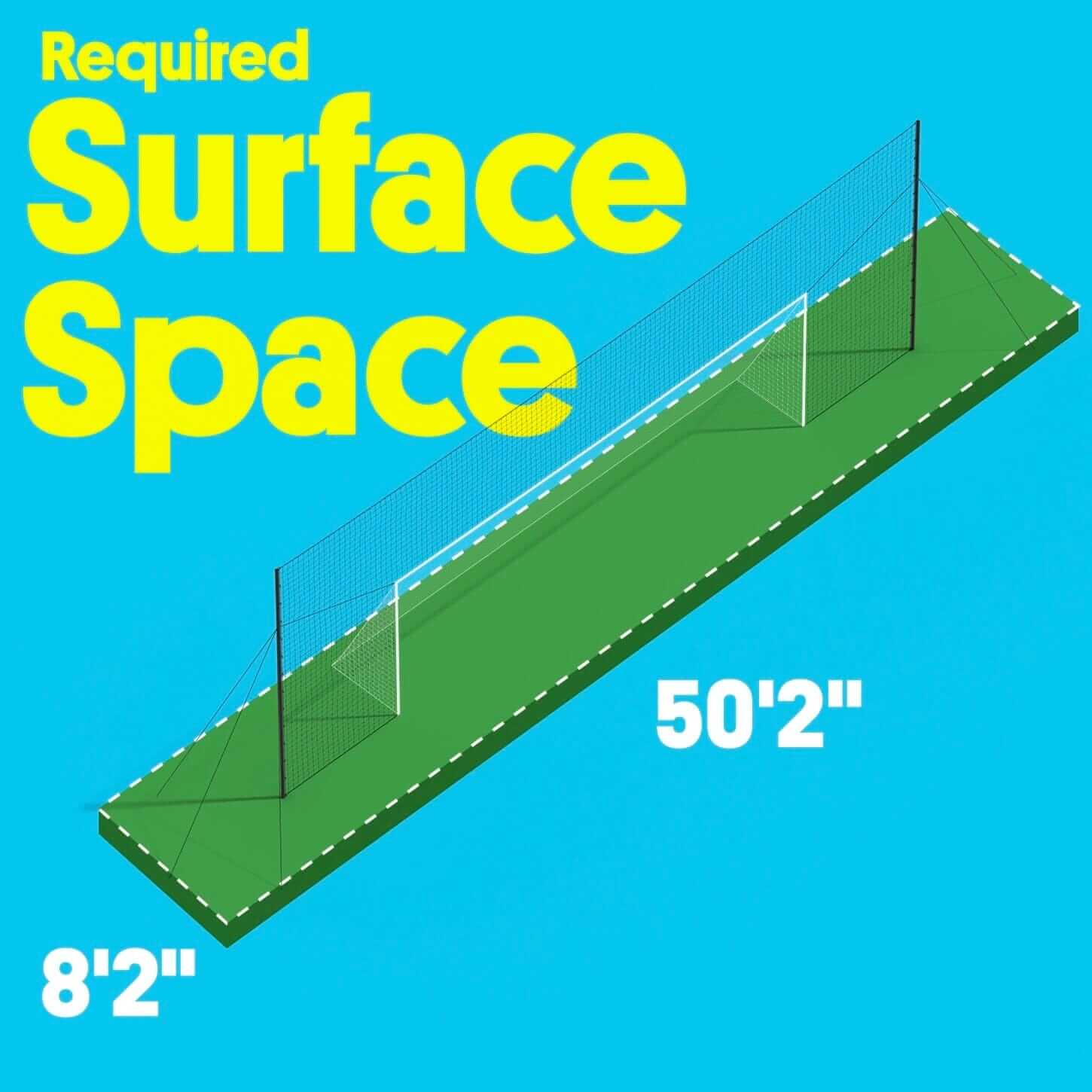Portable soccer goals can be an excellent tool for practicing soccer, especially for youth players. However, many portable goals are made using low-quality materials.
Goals made using low quality materials are more susceptible to damage and do not offer the best training experience. Frequently, small soccer goals are the best option to use when traveling with your soccer goal.
What Is a Portable Soccer Goal?
A portable soccer goal is typically a pop up goal that you can easily take anywhere to practice soccer.
Pop up soccer goals for home often come in a bag to make it convenient for you to bring the goal with you, whether you bring it to a game, the park, or a friend’s house.
Some portable soccer goals do not pop up and involve you fitting fiberglass poles together to build the goal. This option is simple as well, but still involves more steps than a pop-up goal.
Most portable kids soccer goals are easy to set up and enable you to practice soccer without needing to bring along the heavy duty equipment.
Youth soccer players are better suited for mini soccer goals or portable soccer goals, but they can appear to be flimsy when compared to a small soccer goal.
Can I Use a Small Soccer Goal As a Portable Goal?
You can definitely use a small soccer goal as a portable goal. While it may not pop up and come in a carrying bag, a small goal is still easy to relocate and bring with you on the go.
The Open Goaaal 3-in-1 starter trainer is a great soccer goal for youth soccer players ages 4-5 when traveling or in need of something more portable.
The starter 3-in-1 trainer is a training goal, rebounder, and backstop, all in one. It is 6 feet 7 inches tall and is up to 13 feet and 9 inches wide.
A small soccer goal like this training aid has a much higher quality than other portable soccer goals, as it is made of durable and long lasting materials.
It is important to know, however, that even though a small soccer goal is portable, it will take longer to set up. It can take a while to set up a small goal with the help of two people for the first time.
Once you understand the process of how to set it up, the time to build the goal will lessen. The high quality materials of a small soccer goal will make practicing and playing soccer much better compared to using a low quality portable goal.
Open Goaaal small soccer goals are suitable to be used as a portable soccer goals, as they are designed to be installed in areas that have dirt or grass. If you are installing this goal on turf that has concrete below it, it will not work.
How to Set Up a Portable Soccer Goal
To set up a portable soccer goal with poles, the first step is to lay out the pieces. There are usually directions that instruct you on which steps to take to set up your goal.
You will need to put all of the poles together, add the soccer goal net to the poles, and move your goal to the ideal location. Then, you must put the stakes in the ground to ensure it stays in its proper position.
A pop up portable soccer goal is easy to set up, as it simply pops open and into the correct positioning. Once you pop it open, you can use the stakes to appropriately place it into the ground.
A small soccer goal is more challenging to set up, but it is worth the time and effort.
With training equipment like an Open Goaaal small soccer goal, you must hammer the sockets into the ground and screw the rope anchors into the soil. Place the poles up and hang the net, placing it into the proper position.
A small goal may involve more steps for assembly, but it is more durable than other portable soccer goals.
Portable Soccer Goal vs Small Backyard Soccer Goal
While portable soccer goals are designed to make it easy for you to carry along to various destinations, small backyard soccer goals can be simple to transport too. Both the 3-in-1 starter trainer and 3-in-1 junior trainer can be considered portable soccer goals.
The starter trainer is 6 feet by 4 feet and is intended for children ages 6 to 7.
The junior trainer is 8 feet by 16 feet, which may take a little longer to set up than the starter trainer goal.
Both of these soccer goals are made using high quality materials, making them the best choice to bring to practice soccer with a powernet.
Most portable goals are extremely lightweight, causing players to accidentally knock over the goal when practicing. The pop up goals can even blow away if it is windy during a training session and the stakes are not correctly in the ground.
Portable soccer goals that involve you putting together poles to set up can be confusing if you do not have the directions on hand.
Small backyard soccer goals may be the best option so players can practice to their fullest potential and parents can ensure the goal isn’t going to fall apart or blow away.
What Size Are Small Soccer Goals?
Small soccer or football goals can vary in size depending on the age group they are intended for.
A small training goal that is intended for children under five years old can be 6 to 7 feet tall and up to 14 inches wide. A small soccer goal set for children up to age seven is typically 8 by 4.5 to 5 feet wide.
The starter and junior 3-in-1 soccer rebounder trainers are intended for children within these age groups.
What Size Is a Full Size Soccer Goal?
Most full-sized soccer goals are around 24 feet wide, 8 feet tall and 5 feet deep. However, they can be larger. The Open Goaaal 3-in1 large soccer trainer is 10 feet tall and 29 feet wide, making it a large full size goal for players over 8 years old to enjoy.
What Are Soccer Goals Made Of?
Most portable soccer goals and small soccer goals are made of either a metal or a lightweight plastic material. Soccer goals that are on the cheaper end usually are made using plastic, which is why they cost less than a high quality goal.
These goals can include steel frames, PVC pipes, or aluminum tubing for the goal posts, and polyethylene and nylon materials for the nets.
Are Portable Soccer Goals or Small Soccer Goals Better for Practicing?
Portable soccer goals are a great training tool for small children, especially those who do not have much soccer experience yet. Foldable and other portable soccer or futsal soccer goals are:
- Easy to set up
- Easy to disassemble
- Lightweight
- Convenient to carry
While portable soccer nets are convenient and lightweight, they have some disadvantages:
- Flimsy
- Not long lasting
- Often not weather-resistant
Small soccer goals are made using high quality materials, making them able to withstand high winds and fast incoming soccer balls. They do not come in a carrying case, but they are still easy to assemble, disassemble, and bring with you to a new location. You may need an extra person to help assemble the goal, but the time and effort is worth it.
FAQs
What size goal should 7 year olds use?
A 7 year old should use a goal that is 8 feet tall and 16 feet wide, like the Open Goaaal junior 3-in-1 goal. This size youth soccer goal will allow them to practice their individual skills and work on drills efficiently.
Do soccer goals need to be anchored?
Yes, all soccer goals must be anchored properly at all times. If the training soccer goal is improperly anchored, it can fall over or blow away, potentially injuring somebody.
How do you fold a portable soccer goal?
The pop up portable soccer goals are simple to assemble and fold back together. It essentially pops into and out of place, but you need to take out the stakes. Be careful not to bend it too much, because it could snap if bent the improper way.
Final Thoughts
While portable soccer goals are convenient, they are often not all they seem to be. Bringing a small soccer goal with you instead of a portable goal may be the best option. The Open Goaaal 3-in-1 trainers, especially the starter and junior trainers, are suitable sized goals to take with you to any location.
They are made using high quality materials and are simple to assemble to disassemble.
While they take slightly longer to put together than a portable goal and other new products, they enable youth players to work efficiently on their skills and practice a pickup game in any location.




